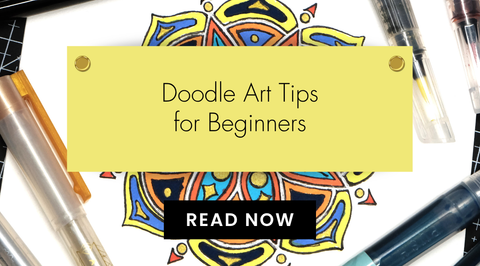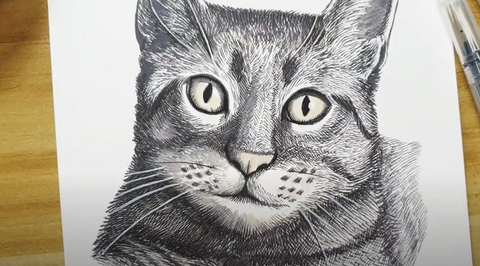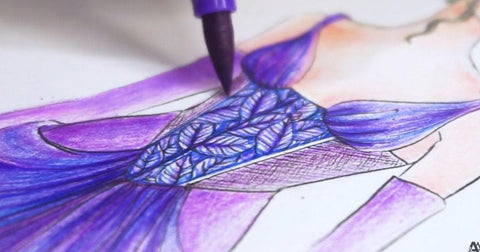Expressive and Emotive Artworks: Fun with Abstraction
Last Updated: October 13, 2025

Representation and realism have long held the spotlight in the realm of art. Still-life paintings, portraits, scenes, sketches, and landscapes have always pleased audiences, and even non-connoisseurs of art can appreciate a painting or two.
Abstract art, however, emerged as a liberating and expressive alternative. For artists seeking a journey into the realm of emotions, spontaneity, and personal interpretation, abstract art offers a unique and fulfilling avenue.
In this blog post, let us explore the joy of abstract art, uncovering the beauty and freedom that comes with creating artwork devoid of representational forms.
What Is Abstract Art?

Let’s first understand the meaning of abstract art, and why artists create abstract pieces.
Abstract art is a style of visual art that does not attempt to provide an accurate depiction of visual reality. Instead of portraying recognizable objects or scenes, abstract art emphasizes shapes, colors, forms, and gestural marks to achieve its effect.
The purpose of abstract art is often to evoke emotions, sensations, or ideas in the viewer, relying on the expressive and non-representational qualities of the elements used.
Guiding Principles of Abstract Art

Even though some people might see abstract art as “chaotic”, it still has its guiding principles that artists follow, whether subconsciously or not.
1. Non-Representational Forms
Abstract art intentionally avoids representing objects or scenes found in the natural world. Instead, it focuses on creating non-representational compositions, allowing for a departure from literal interpretations.
2. Emphasis on Form and Color
In abstract art, shapes, forms, and colors take precedence. Artists leverage these elements to convey emotions, explore relationships between visual elements, and forge a distinctive visual language that transcends realistic representation.
3. Expressive Gestures
Many abstract artists employ expressive gestures and techniques in their work. This may involve bold brushstrokes, drips, splatters, or other dynamic movements that reflect the artist's emotions and energy. The physical act of creation becomes an integral part of the artwork itself.
4. Freedom and Spontaneity
Abstract art frequently embraces a sense of freedom and spontaneity. Artists may incorporate chance and improvisation as significant elements in their creative process, resulting in unexpected and serendipitous outcomes.

5. Subjectivity and Interpretation
Abstract art invites subjective interpretation, encouraging viewers to engage with the artwork on a personal level and derive their own meanings and emotions from the composition. The open-ended nature of abstract art allows for a spectrum of interpretations, making it a profoundly individual and subjective experience.
6. Composition and Design
Though abstract art doesn’t adhere to realistic representation, it still relies on principles of composition and design. Abstract artists carefully consider elements such as balance, contrast, rhythm, and unity as they arrange visual components within the artwork.
7. Minimalism or Complexity
Abstract art spans a spectrum, ranging from minimalist compositions featuring simple geometric shapes and limited color palettes to intricate designs that may involve layering, texture, and a wide range of colors. The level of complexity in abstract art varies, shaped by the artist's intent and individual style.
8. Experimentation with Materials
Abstract artists frequently engage in experimentation with a diverse range of materials and techniques. This exploration may involve unconventional tools, mixed media, and various surfaces. The diverse use of materials contributes to the richness and innovation within the abstract art genre.
Discover Art with The Artist in You: Painting 101 With Watercolor Tubes Online Class!
Why Abstract Art?

Composition VI by Wassily Kandinsky (1913)
Freedom of Expression
Abstract art liberates artists from the constraints of depicting recognizable subjects. Rather than delving into the intricacies of realistic representation, artists can delve into the depths of their emotions, thoughts, and experiences. This freedom permits a more personal and subjective form of expression, establishing a direct channel between the artist's inner world and the canvas.
Embracing the Unpredictable
One of the most exhilarating aspects of abstract art is its inherent unpredictability. As artists release the need to control every brushstroke, they welcome the element of chance into their creative process. This spontaneity frequently results in surprising and unique outcomes, fostering a sense of discovery and excitement with each new piece.
Color as a Language
In the world of abstract art, color takes center stage as a potent means of communication. Artists have the freedom to experiment with vibrant palettes, explore the interplay of hues, and use color as a vehicle to convey emotions that surpass the limitations of words. The use of color in abstract art establishes a direct connection with the viewer's emotions, creating an immersive and evocative experience.
Gesture and Movement
Abstract art frequently incorporates dynamic and expressive gestures. Whether it's the sweeping motion of a brush, the dripping of paint, or the layering of textures, the physical act of creating abstract art becomes a dance between the artist and the canvas. This emphasis on movement adds a visceral quality to the artwork, inviting viewers to connect with the energy and passion embedded in each stroke.
Open to Interpretation
One of the joys of abstract art is its openness to interpretation. Without the constraints of recognizable subjects, viewers are free to derive their own meanings from the artwork. This ambiguity encourages a diverse range of responses, fostering a rich tapestry of perspectives and emotions that transcend cultural and linguistic boundaries.

Mountains and Sea by Helen Frankenthaler (1952)
Embrace the Abstract and Let Your Artistry Flow
As artists venture into the world of abstract art, they embark on a journey of self-discovery, emotional exploration, and creative liberation.
The joy of abstract art lies not only in the finished masterpiece but also in the process of creation – a process that embraces spontaneity, celebrates the beauty of imperfections, and invites viewers to connect with their own emotions in a deeply personal way.

Let the canvas be your playground, and let the joy of abstract art guide you on a path of endless creative possibilities. And if you run out of ideas or need any inspiration in your art, don’t hesitate to hang out with us in The Creative Corner! Have fun creating abstract art!






